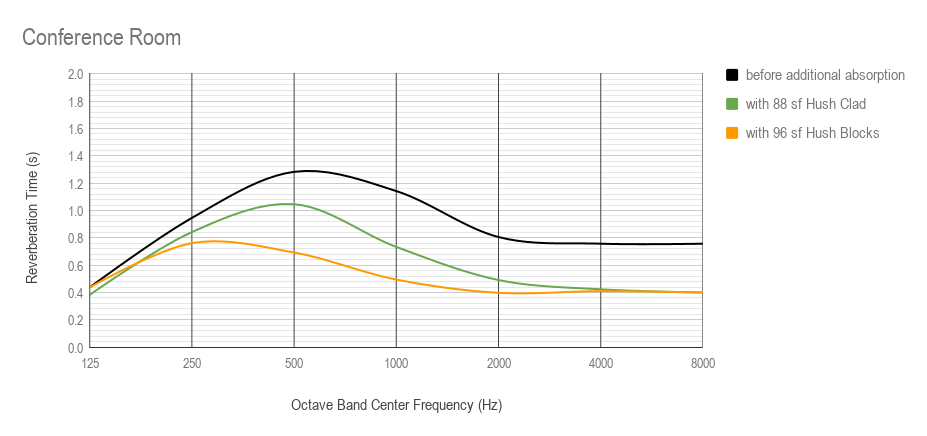Look Book Issue 3 | Be Well 20/20 | 3Form Acoustics
3FORM Q+A WITH BRAD ANTISDEL AND ZACKERY BELANGER
Designing for acoustic control is imperative for many projects. Sound can have such a profound impact on a space and its users, involving an acoustician early in the design process is vital for a successful project. 3Form recognizes the value of thoughtfully designed spaces and has established an ongoing partnership with acoustical architect, Zackery Belanger of Arcgeometer. Through this partnership, 3Form and Zack bring an immeasurable value to each project and ultimately the users.
Kansas City’s 3Form rep, Brad Antisdel, connected with Zack, resulting in an insightful conversation around the value of acoustical design and its impacts within an interior space.
How do you approach making acoustic design good looking?
Acoustics and visual design are much more closely related than we’re taught. They are often considered at odds with each other because acoustics has a long history of being visually unappealing or even hidden. But the sound of a room is the result of the acoustic influence of everything in it, including elements that are not intended to be acoustic. Everything you can see will also influence what you hear, so the best acoustic design is also visual design.
How can acoustics evolve with current trends in visual design?
The best manufacturers of acoustic products employ the help of talented visual designers. There are infinite possible ways to design products that influence sound, so the look of those products can be a powerful way to make decisions in the design process. Also, you need significant depth and coverage of acoustic products to significantly change the sound of a space, so it’s important that the acoustic products integrate visually.
Expertise in acoustics can be expensive. How do designers approach this when budget is a concern?
If a project is acoustically critical, like a concert hall or recording studio, then acoustic experts need to be a part of the design team. For many projects, though, the budget just isn’t there and the amount of acoustic help needed is reasonable. 3form takes this problem seriously by offering a few hours of consultation from an outside expert, free of charge, to their customers. This service is valuable for diagnosing an acoustic problem, determining how much absorption a space needs, and comparing different product lines to achieve that result.
How does that service work?
It’s tailored to each project, but it generally involves a meeting by phone or video where the project and the acoustic goals and challenges are discussed with the independent consultant. This is usually followed by an exchange of relevant information about the room in question – usually dimensions, materials, and program. This information is used to create a plot like the one shown here, which is a prediction of reverberation time with and without an acoustic solution. Frequently there are follow-up discussions and sometimes modifications to the calculations in order to make performance, visual, and budget all meet successfully.
Two of 3Form’s leading acoustical products, Hush Blocks and Hush Clad, are great considerations when designing for high acoustic need spaces.

Why are all of a room’s materials needed for an acoustic analysis?
We often think of acoustic surfaces as only the engineered products. That’s only part of the story. The hard, nonporous surfaces like concrete, metal, stone, resin, and glass are also acoustic, and so are the furniture, objects and people who occupy a space. Acoustic problems, such as excess reverberation, arise when the acoustically reflective and absorptive surfaces are out of balance. Since architecture tends toward hard surfaces, the challenge is to raise the soft surfaces to the same level of visual and functional appeal. Acoustically absorptive surfaces have long been avoided, minimized, and hidden, but that is changing.
What is the best place for acoustic absorption in a room?
Sound moves incredibly quickly in air – about 1,125 feet, or 343 meters, per second. It fills spaces and interacts with every surface in a fraction of a second. This means that wherever acoustic absorption is placed in a room, it will be effective at reducing reverberation, which is great because soft surfaces can be placed out of reach for cleanliness or durability. Getting the right quantities in the space to keep reverberation down is a critical aspect of acoustic design. Sometimes we find conditions where particular surfaces should be targeted with acoustic absorption or diffusion to control focusing or problematic sound reflections. Quantities still matter in those cases, but usually specific placement is more of a refinement than a necessity.
I’ve heard of projects where a high-NRC product was used, but it didn’t work. What’s going on with that?
We see this a lot. NRC – Noise Reduction Coefficient – has a counterpart that often goes unnoticed. NRC tells us how well a surface absorbs sound per square foot, which means that the total application area is also important. In other words, you need to get both the NRC and square footage right. This is where 3form’s free consultation services are useful: the equations of acoustics can be applied to any given room to determine the precise coverage needed. And in cases where budget pushes quantities lower, the precise change to be expected in the room can be calculated to help the client make an informed decision.
Does higher NRC mean better acoustics?
The total effect on a room is a combination of NRC and area of coverage, so lower NRC products are great sometimes – you just need to cover more area with them to accomplish the same goal. We find that some clients actually prefer lower NRC products because they like the look of covering an entire wall, rather than hanging a few panels.
I see some products with NRC greater than 1.0. How is that possible?
Some products really do exceed 1.0 because NRC assumes flat surfaces. If the product is more sculptural – more 3-dimensional – then it can outperform the best flat surfaces, which is what pushes NRC above 1.0. The rigid testing standards do allow for this. If ever in doubt about a manufacturer claim, you should ask them to provide the formal laboratory test reports, or reach out to your 3form dealer or sales representative and they’ll put you in touch with an expert who will review it free of charge.
What are your thoughts on acoustics in a COVID-19 and post-COVID-19 world?
A lot of acoustic problems stem from a high density of people, so currently we’re seeing some reduction in those problems. We’re also seeing a rise in other acoustic problems, such as reverberant spaces that are now used for video and phone conferencing, but were never intended for that. We’re anticipating an eventual return to the densities that we’re used to, and also that many of us will continue to work remotely even after the pandemic passes. Acoustics seems to get more and more important to people every year, and we don’t expect that to change. 3form acoustic solutions are up to the challenge.
Special thanks to Brad and Zackary for their contribution to our Be Well 20/20 Look Book! For more information on 3Form, reach out to Brad Antisdel.


FOR MORE OF OUR BE WELL 20/20 LOOKBOOK, CLICK HERE!



